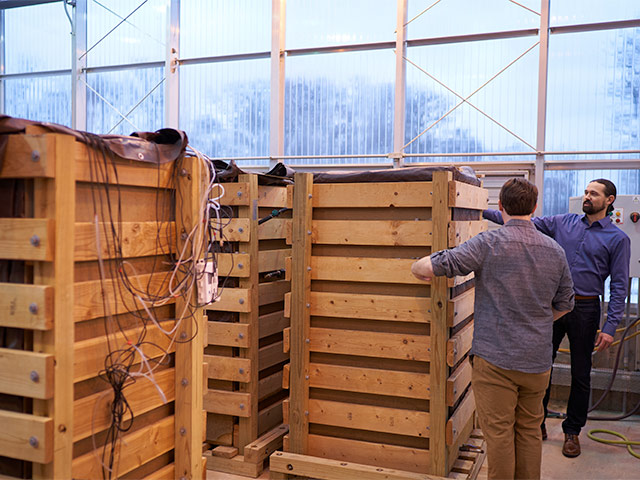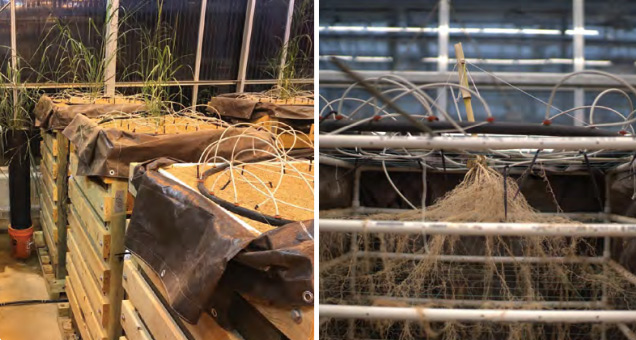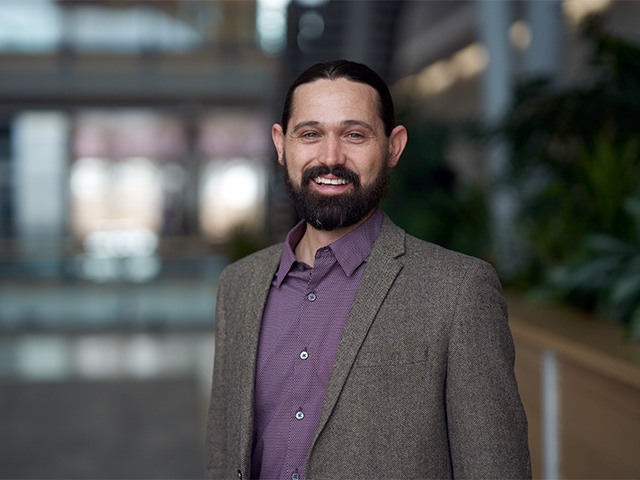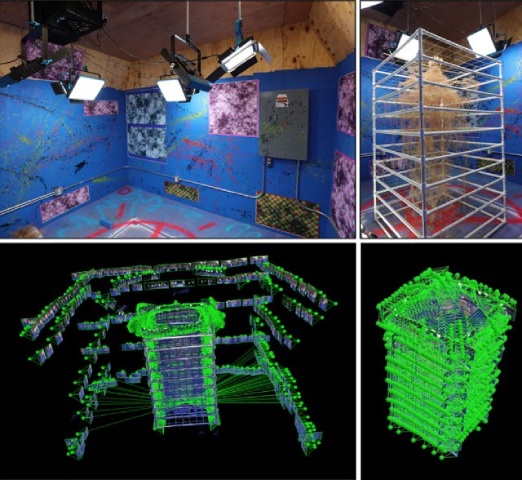Getting Your Hands Dirty: How Dr. Chris Topp’s Lightbulb Moment is Shedding New Light on Roots
A few years ago, around 2016, Danforth Center Principal Investigator Chris Topp, PhD, was thinking about his proposals to a new ARPA-E program called “Rhizosphere Observations Optimizing Terrestrial Sequestration” or ROOTS. As he was pacing and contemplating root studies, a construction dumpster full of shipping pallets caught his eye. “As I opened the side door on the dumpster and pulled out some pallets for my vegetable garden, it hit me: what if we had a big container full of plants and we could look in the side to see the roots?”
In December 2022, the Topp lab published an article in the journal Frontiers in Plant Science on their novel system to visualize, measure, and analyze full-size root systems. They built large (6-foot+) customized plant growth boxes, dubbed “mesocosms” and loaded them with sensors to measure environmental factors around the roots. The complete root system can be imaged and visualized in 3D through photogrammetry, the extraction of three-dimensional measurements from two-dimensional data (images). The mesocosms enable a better understanding of root traits and the impact of subterranean factors on crop plant growth and development than ever before.
Roots have enormous untapped potential to help solve our biggest challenges in agriculture production.
Chris Topp, PhD,
Danforth Center Principal Investigator
Root studies in the field are mostly limited to digging trenches and soil cores. Root experiments in pots are often compromised because the roots become pot-bound, which is not their natural shape, and water and nutrients don’t move the way they would in nature. "Mesocosms are a middle ground," says Topp. "More realistic than a pot, but more conducive to root study than the field."

Dr. Topp surveying the rows of the over-6-foot-tall mesocosms in the Danforth Center greenhouse.
The Hidden Half
Hidden below ground, roots are the foundation of any plant’s life and hold the key to solving some of our greatest global challenges—yet they remain mysterious. For most of human history, the question of how to study these complex living networks remained unanswered. Dr. Topp has made roots the focus of his research through a variety of innovative methods including field work, X-ray CT scanning, and mesocosms.

Fully assembled, the mesocosms are a seemingly messy DIY jumble of sensors and pallets. Once the dirt is carefully removed, however, what remains is the root architecture, which will be painstakingly imaged in 3D using photogrammetry, and correlated to the sensor data.
Through the study of roots, scientists in the Topp lab are learning about water and nutrient uptake, how plants respond underground to drought and other stressors, so that we can learn to grow plants in more places with less water and less fertilizer. They are figuring out how plants lock carbon in the soil—a vital service plants provide naturally that could be enhanced. They are investigating the symbiotic relationship between plants and the soil microbiome.

Topp is a co-director of the Danforth Center’s new center of excellence, the SINC Center (Subterranean Influences on Nitrogen and Carbon). The SINC team is using mesocosms to carry out one of the Center's flagship projects: understanding how microbes can persist on root systems across space and time. “We sample roots from different parts of the box, the microbes there— how do they differ across root length, depth, temperature. We are trying to understand how and when the microbes hitch on to roots, so that we can minimize fertilizer use.”

Images and data from the photogrammetry shed. AI and machine learning algorithms developed by the Danforth Center’s Data Science team help make sense of the voluminous data on root size, shape, density, and other traits captured by the mesocosm’s sensors.
“Everything you see above ground is supported and nourished by what’s underground,” says Topp. “Roots have enormous untapped potential to help solve our biggest challenges in agriculture production.”
The Need
Flashes of insight like the one Dr. Topp experienced only translate into real innovations if they are backed up in the lab by cutting-edge infrastructure, technology, and early-stage project support. These crucial functions are funded by the Danforth Center’s Impact Fund. Please consider a gift today.
About
A version of this story originally appeared in the Leaflet, the free newsletter of the Donald Danforth Plant Science Center. Sign up to receive more stories like this straight to your inbox.